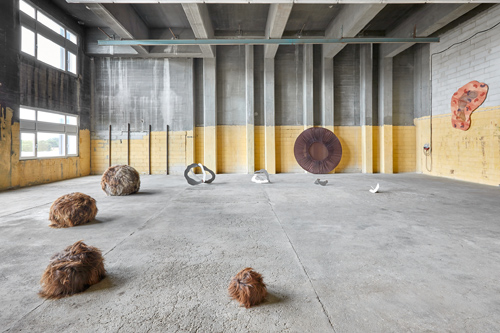
View Rhythm of Life in front Process -Cypernetic- 2022 90x820x765 cm
Lambskin, foam, aluminium and silicone
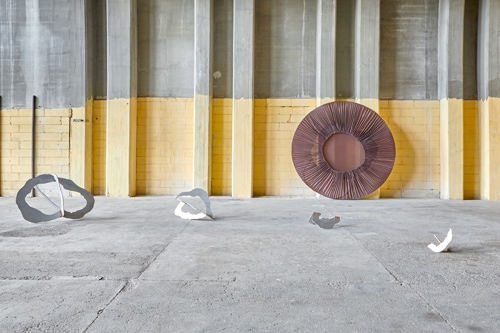
In front Process -Cypernetic- 2022
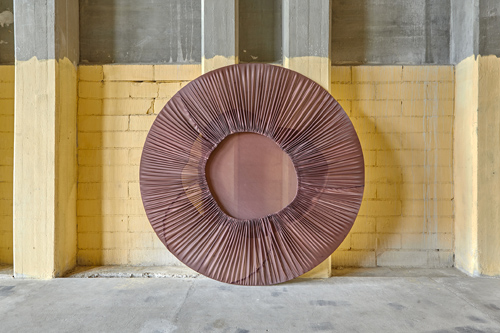
Rhythm of Life 2022 240 ø cm. shyntetic chiffin and handcut plywood
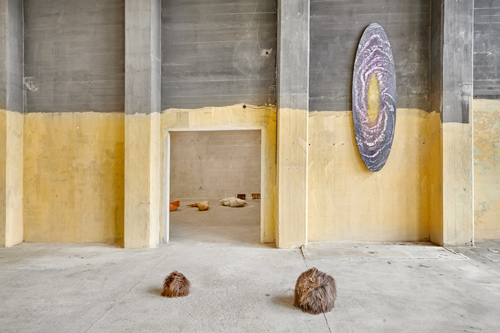
View on wall Out There in Here ll 2022 300x86x5 cm. silk, silkpaint and lasercut plywood
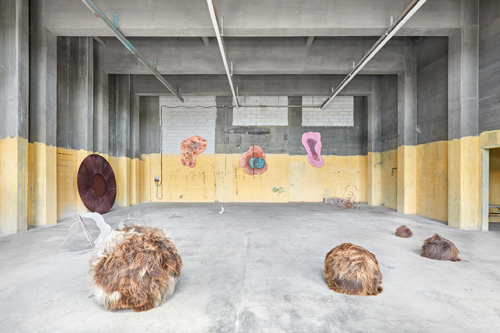
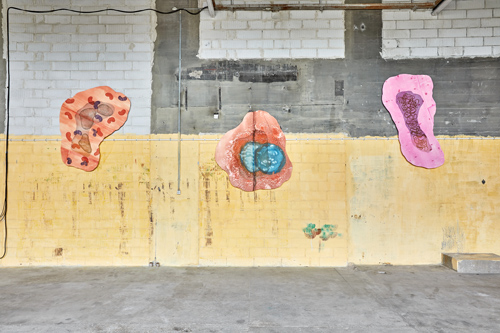
From left Organell 2022 166x186x1,5 cm. silk, silkpaint and handcut plywood,
Meiose 2022 170x153x1,5 cm. silk, silkpaint and handcut plywood,
Genome 2022 210x113x1,5 cm. silk, silkpaint and handcut plywood.
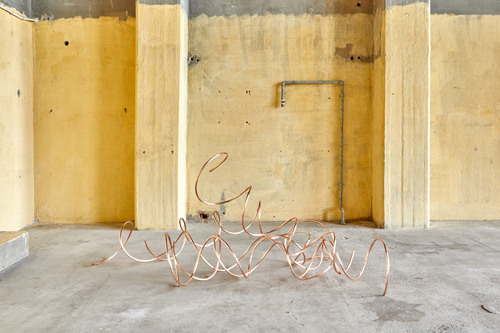
DNA Jam 2022 87x250x140 cm. copper
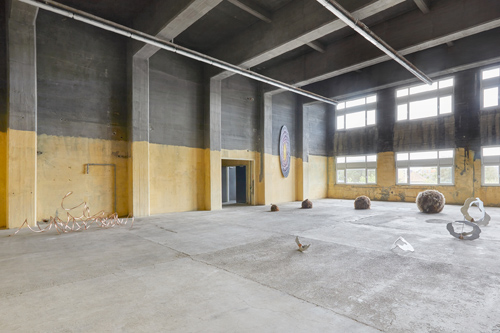
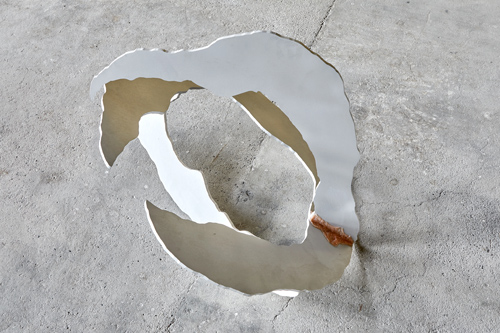
Process -Cypernetic- close up
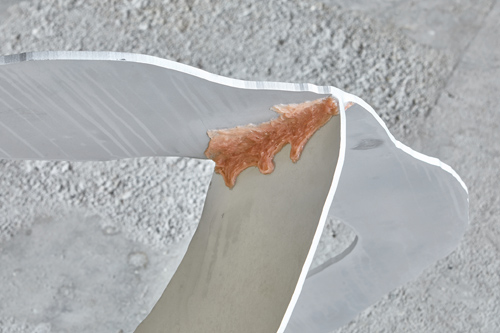
Process Cypernetic close up
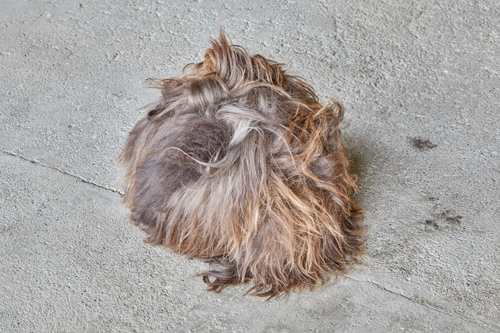
Process Cypernetic close up
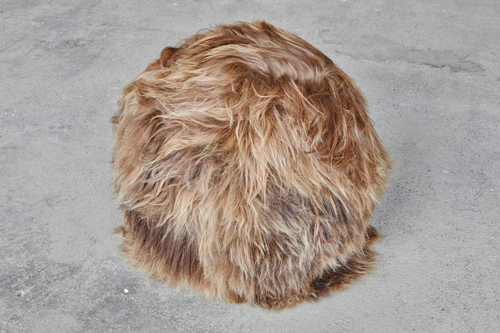
Process -Cypernetic- 2022 close up lambskin and foam
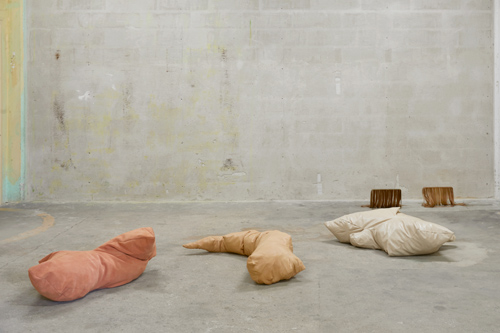
Entrance view in front Hybrids
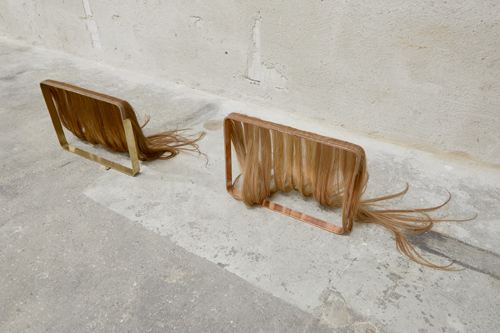
Hybrids (cyborn) 2022 each 23x33x2.5 cm Brass, copper and hairextensions
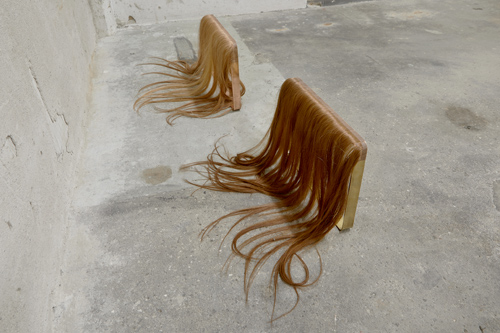
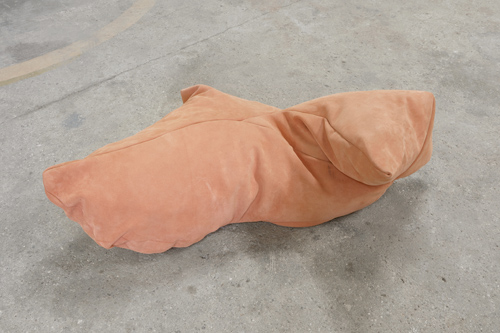
Hybrid Cocoon 2022 33x107x78 cm. suede and foam
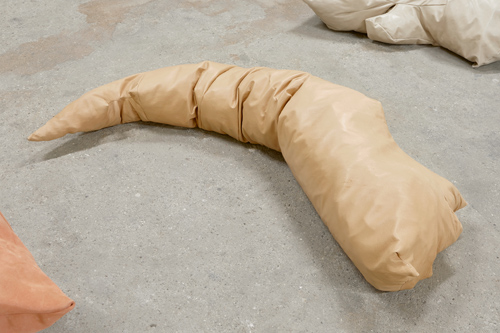
Hybrid Cocoon 2022 26x112x70 cm. leather and foam
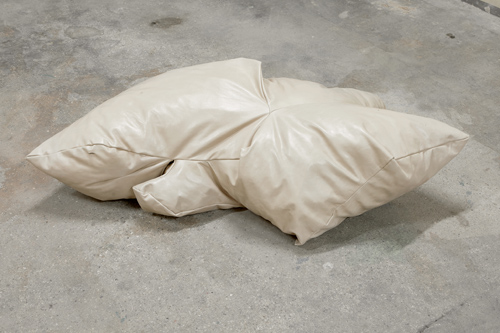
Hybrid Cocoon 2020 36x120x66 cm. leather and foam
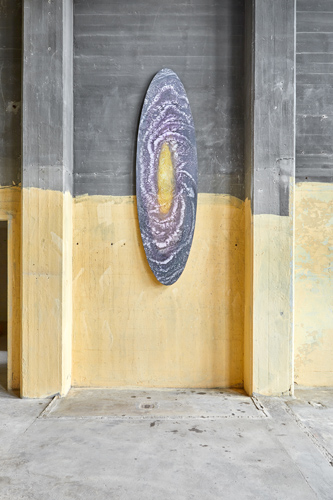
Out There in Here ll 2022 silk, silkpaint and lasercut plywood
Louise Sparre // Rhythm of Life
Kunsthal Kongegaarden X (KGX)
Text by Nanna Balslev Strøjer
The exhibition Rhythm of Life at Kunsthal Kongegaardens X-rum (KGX) is an artistic processing of reflections on interconnectedness. With its sensory-rich and visually stimulating form, Louise Sparre connects our inner and outer spaces and points out how everything is part of a larger and vital ecosystem.
The materials of the works—silk, leather, hair, fur, silicone, and aluminum—elegantly engage in dialogue with both concept and composition, revealing a landscape that is simultaneously zoomed out to the universe's outer galaxies and zoomed into the matter of our bodies and the microorganisms they consist of. Galaxies, planets, and microbes thus constitute Louise Sparre's palette, and Rhythm of Life materializes as a poetic journey into ourselves and out into the vast macrocosmos.
As suggested by the exhibition's title Rhythm of Life, Louise Sparre is not only concerned with internal connections but also with life's larger processes, where everything is always in either a phase of building up or breaking down. She refers not only to the human life rhythm—from young to old—but to the transformation that constantly occurs at both the cellular and planetary levels, supporting the mutual dependence of all living species.
Louise Sparre's Soft Sculptures, which lounge in the entrance area, are perceived as a kind of cocoons, emphasizing the transformation process as a central theme in the exhibition. Simultaneously, the sculptures mark the entrance as a spatial transition in and out of the artist's universe.
In the large and very high exhibition space, a galaxy hangs on the wall in painted silk, and in the installation Process - Cypernetic, open, slender aluminum structures are connected with long-haired fur objects in a semicircle, inviting the exhibition guest to place themselves as part of the evolutionary chain. "Do you constitute the beginning or the end?" the work seems to ask.
The approach is at once minimalist and lavish, tight and pompous—perhaps even a bit naive in its expression—and Louise Sparre consciously uses this dynamic to formally illustrate the relationship between life's incredible complexity and simultaneous utter simplicity. In this work, Louise Sparre projects a feminine and caring view of the universe as an alternative to the more masculine sci-fi aesthetic that has otherwise defined our view of astronomy and presents a form of feminist reinterpretation of the universe's gestalt.
Rhythm of Life is a body where we ourselves constitute the cells in the exhibition's own little ecosystem. The Enlightenment view of nature as something to be dominated is dismantled, and we can return to the world with a renewed awareness of the interconnectedness of all things—that we, after all, are all made of stardust.
supported by
